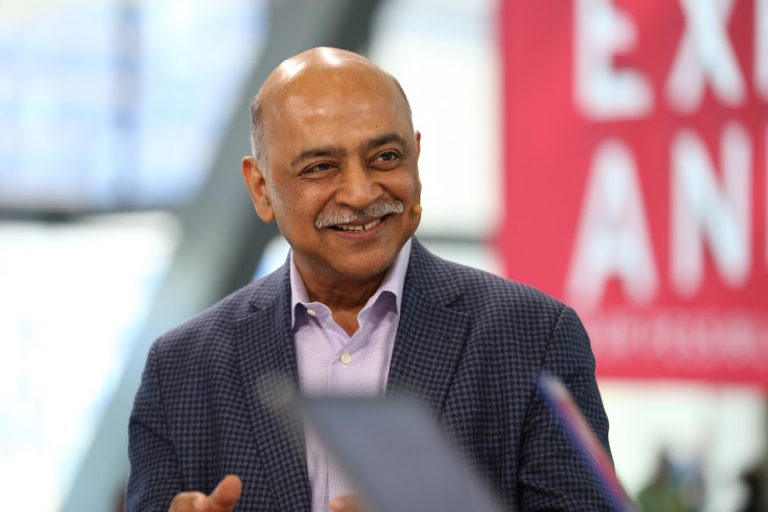 CLOUD
CLOUD
 CLOUD
CLOUD
 CLOUD
CLOUD
IBM Corp. Chief Executive Officer Arvind Krishna, who officially took the helm today after being selected to succeed Ginni Rometty in January, has announced a series of major leadership changes at the company.
The shakeup is part of Krishna’s plan to refocus IBM on hybrid cloud computing and artificial intelligence. These two trends, Krishna (pictured) told employees in an internal email that he posted on LinkedIn today, “must have the maniacal focus of the entire company.”
Krishna helped shape IBM’s hybrid cloud and AI initiatives in his previous role as vice president of cloud and cognitive software. The CEO is now appointing Howard Boville, formerly Bank of America Corp.’s chief technology officer, as senior vice president of cloud platform to lead the IBM Cloud business unit. The unit is already a central pillar of IBM’s strategy and is set to become an even bigger focus in the new strategic roadmap.
The AI component of the strategy is being entrusted to newly appointed IBM President Jim Whitehurst. Whitehurst was previously CEO of Red Hat. In his new role, the executive will head IBM Strategy as well as the Cloud and Cognitive Software unit that Krishna led before taking over the top post.
Two more key executives will take on new roles in the company’s leadership team. Bridget van Kralingely, previously the head of IBM’s global industries, clients, platform and blockchain units, will become senior vice president of global markets. The executive will now be responsible for “simplifying our go-to-market strategies across all business units as well as strengthening IBM’s client-centric culture,” Krishna wrote. She succeeds Martin Schroeter, who’s retiring after 28 years with the company.
Whitehurst’s previous CEO post at Red Hat is being handed to Paul Cormier, a 19-year veteran of the company who has until now served as vice president of engineering.
As the new top executive at Red Hat, Cormier is poised to play a key part in shaping IBM’s strategy. On top of naming hybrid cloud as one of the company’s two core imperatives, Krishna told employees that “we have to win the architectural battle in cloud.” He elaborated that “there’s a unique window of opportunity for IBM and Red Hat to establish Linux, containers and Kubernetes as the new standard. We can make Red Hat OpenShift the default choice for hybrid cloud in the same way that Red Hat Enterprise Linux is the default choice for the operating system.”
Like Krishna, Cormier drew parallels between OpenShift and Red Hat Enterprise Linux in his most recent interview on SiliconANGLE Media’s theCUBE studio. “It’s like the Unix days all over again,” he said. “When you had one vertical stack and customers started to roll out a common stack. That’s why RHEL succeeded, because we gave them that commonality and they couldn’t afford five different silos to try and manage and develop their applications.”
Hybrid cloud and AI aren’t the only subjects Krishna addressed in his email announcing the executive changes. He touched upon the coronavirus pandemic, highlighting that IBM has weathered “countless storms” during its 109-year history, but also stressed the need for a forward-looking approach.
“One of my key priorities will be fostering an entrepreneurial mindset across our business,” he told employees. “All of this also needs to be complemented by a growth mindset. This is based on the understanding that we all have an enormous capacity for growth. But also, that learning is a continuous process.”
Support our mission to keep content open and free by engaging with theCUBE community. Join theCUBE’s Alumni Trust Network, where technology leaders connect, share intelligence and create opportunities.
Founded by tech visionaries John Furrier and Dave Vellante, SiliconANGLE Media has built a dynamic ecosystem of industry-leading digital media brands that reach 15+ million elite tech professionals. Our new proprietary theCUBE AI Video Cloud is breaking ground in audience interaction, leveraging theCUBEai.com neural network to help technology companies make data-driven decisions and stay at the forefront of industry conversations.